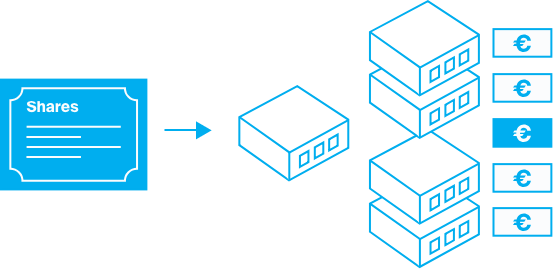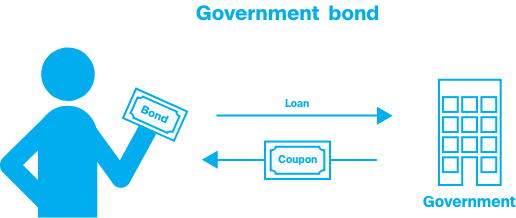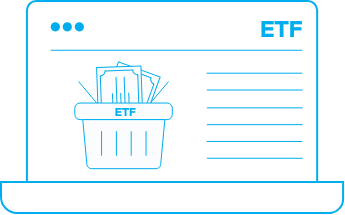03 Basic financial instruments
Text version

Stocks, bonds and funds
Once you get started investing, you may find that there are many products available ranging from simple to complex. So where do you start?

Stock trading
The most well know form of investing is trading stocks. By purchasing a stock of a company which is publicly traded, you in effect become the owner of a small part of that company. And if this company performs well, it will become attractive for other investors to also purchase stocks of the company. In this case, the stock price will typically increase and you could sell your position in this company for a profit. This is known as a capital gain. Conversely, a capital loss can occur if the company falls under bad times and the stock price decreases. Selling your stocks may then result in a loss for your investment.
Selling at a higher price than you bought it for is not the only way to grow your portfolio. It is a common practise for companies to distribute a part of their profits back to stockholders. This paid amount is called a dividend. This way, you can generate an income from your stocks without needing to sell the position.

Bond trading
Bonds are another well-known and frequently used financial product. They are in essence a loan to a government or corporation on which you receive interest. This interest is referred to as a coupon, and this amount can differ depending on a number of factors, including the duration of the loan and the credit rating of the institution you lend to. Investments in short term bonds to governments or companies with a high credit rating are a common way to decrease risk in a portfolio. The downside of these low risk products is that the coupon can typically also be expected to be low.

Exchange traded funds (ETFs)
It is also possible to get a selection of different financial products with a single purchase. Normally, buying a large amount of different stocks requires a sizeable budget and would be time-consuming. However, products such as ETFs make it possible to do this in a simple and cost friendly manner.
An ETF, or tracker as they are commonly called, is a passively managed fund which looks to match its return to the underlying basket of products. The underlying assets of a tracker could be an index, such as the S&P 500. They can also be specialized with respect to other factors, including region or sector. Some examples of this would be a tracker of European firms or one with stocks from agricultural companies. The institution issuing the fund will charge a fee, often between 0.10% - 1.00% for this service. These costs are typically included in the price of the product itself.
Investment funds
An investment fund is very similar to a Tracker. This is also a collection of underlying financial instruments in a single product, however, an investment fund will be actively managed by a fund manager. This means that the contents of the fund are often reviewed and can change over time. Costs for an actively managed fund will be higher than that of a passively managed tracker and tend to range between 0.5% - 2.00%. Like trackers, these costs will usually be included in the price of the product.
Brokers typically charge a fee when investing in ETFs and investment funds. However, with ESKIMO you can invest in a range of these products with no transaction costs. On the fee page, you can find an overview of these products and read more about the conditions.
Coming up
In the next lesson, we will introduce more complex products. Examples of these are Options, Futures and Leveraged Products.
Start investing today.
Start investing today.
- Incredibly low fees.
- Comprehensive tools, capabilities, and service.
- Worldwide. Anytime and anywhere.
- Secure structure.